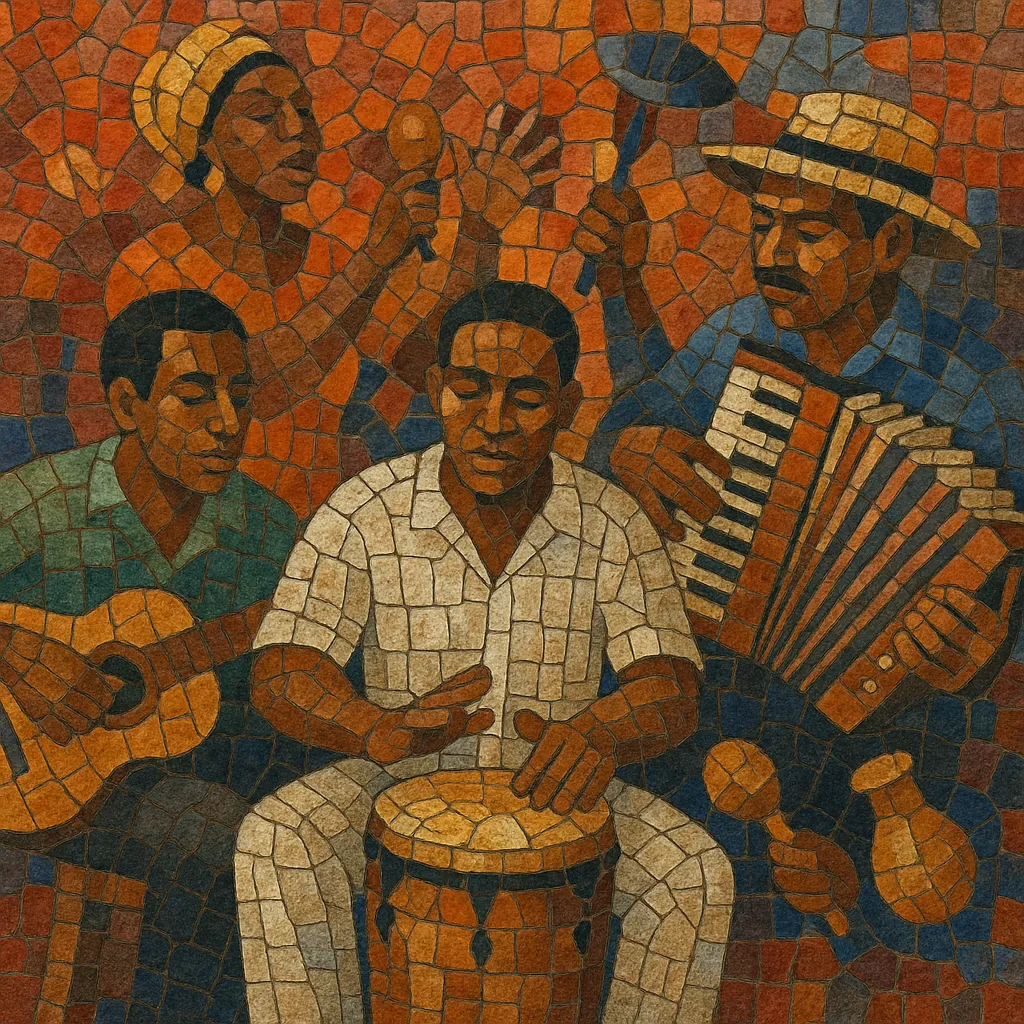Goombay is a traditional Bahamian dance music centered on the hand‑played goombay (goatskin) drum, call‑and‑response singing, and lilting, syncopated rhythms. Typically performed by small ensembles for social dances and celebrations, it blends West African rhythmic sensibilities with European ballroom dance forms adopted in the islands.
While often mentioned alongside Junkanoo, goombay is distinct: Junkanoo is a large parade tradition, whereas goombay favors intimate club, hotel, and community settings. Its hallmark sound combines the pulse of the goatskin drum with cowbell, maracas, guitar or banjo, and, in later forms, accordion and saw rasping (a timbre also heard in Bahamian rake‑and‑scrape). The result is buoyant, festive, and deeply tied to Bahamian identity.
Goombay took shape in the Bahamas during the 1800s, when enslaved and later emancipated Africans sustained drum‑centered musical practices and adapted them to local social life. The goatskin "goombay" drum provided the rhythmic heart, while European couple‑dance forms such as the waltz and polka influenced step patterns and phrasing. Over time, call‑and‑response vocals, off‑beat cowbell, and hand percussion forged a distinctive island groove.
With Nassau’s hotel and nightclub scene thriving, goombay moved from yards and community gatherings onto bandstands catering to locals and visitors alike. Pioneers such as George Symonette, Blake Alphonso "Blind Blake" Higgs, Freddie Munnings Sr., and Count Bernadino popularized the style on records and in resort venues. Small ensembles combined goombay drums, guitar/banjo, maracas, and cowbell; some acts added accordion and the rasped handsaw timbre associated with Bahamian rake‑and‑scrape, enriching the sound palette.
From the 1970s onward, Bahamian bands absorbed currents from calypso, mento, funk, and later reggae and pop, without losing the core drum‑driven sway. Acts such as King Eric & His Knights and Ronnie Butler carried goombay into the modern era, while local festivals (e.g., Goombay Summer) kept it visible. Although Junkanoo and goombay remain distinct traditions, they have long influenced each other’s rhythms and repertoire; contemporary Bahamian pop, worldbeat fusions, and even tropical rock have drawn on goombay’s sunny, dance‑forward feel.
Goombay endures as a symbol of Bahamian cultural life—music for dancing, storytelling, and celebration. Its steady two‑step pulse, communal singing, and unmistakable goatskin drum timbre continue to animate stages, streets, and social gatherings across the islands.


